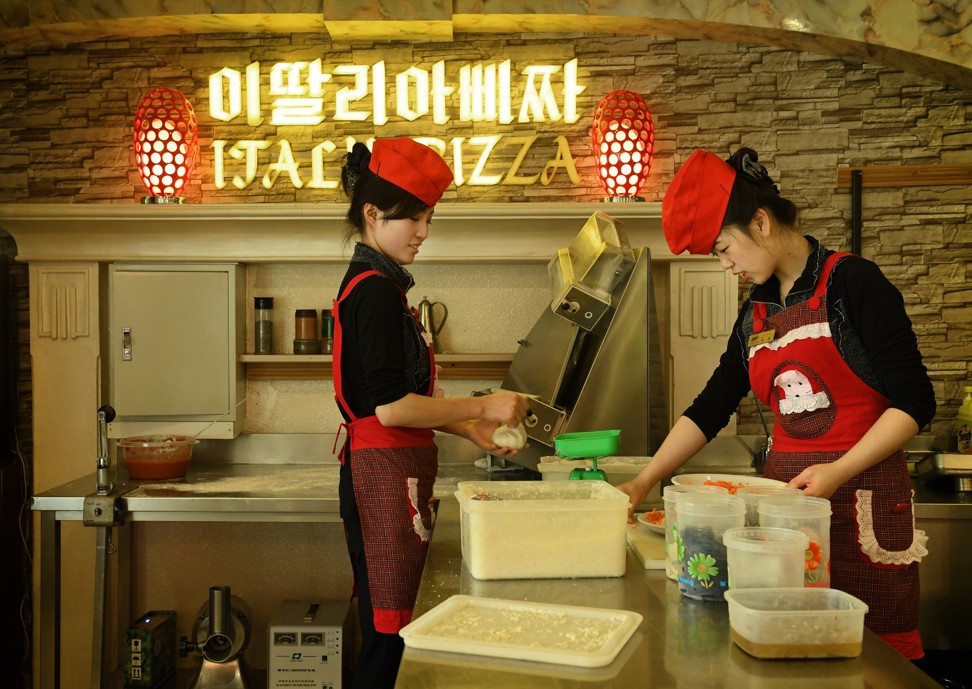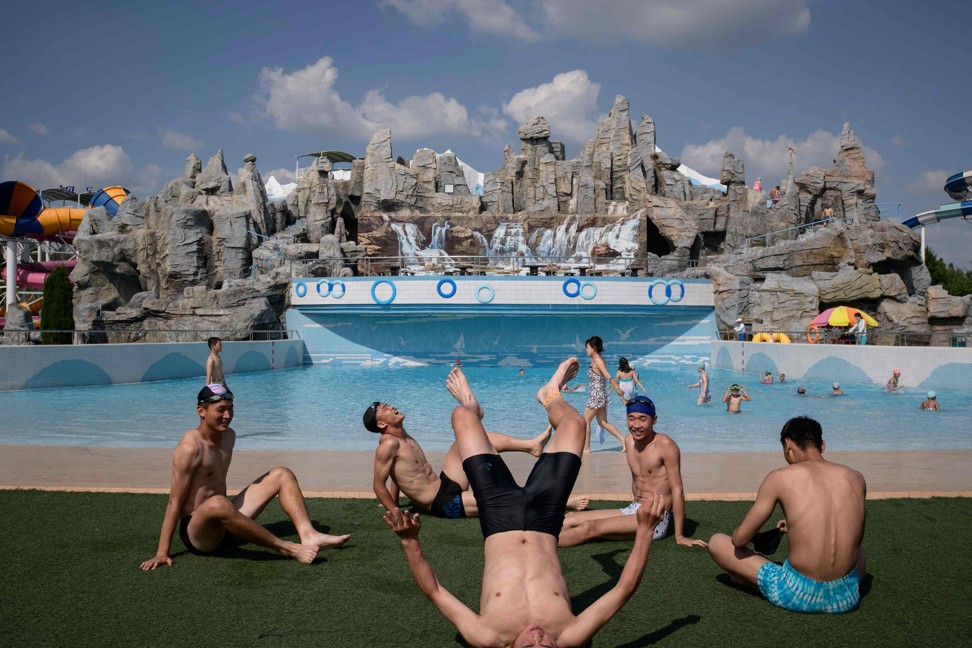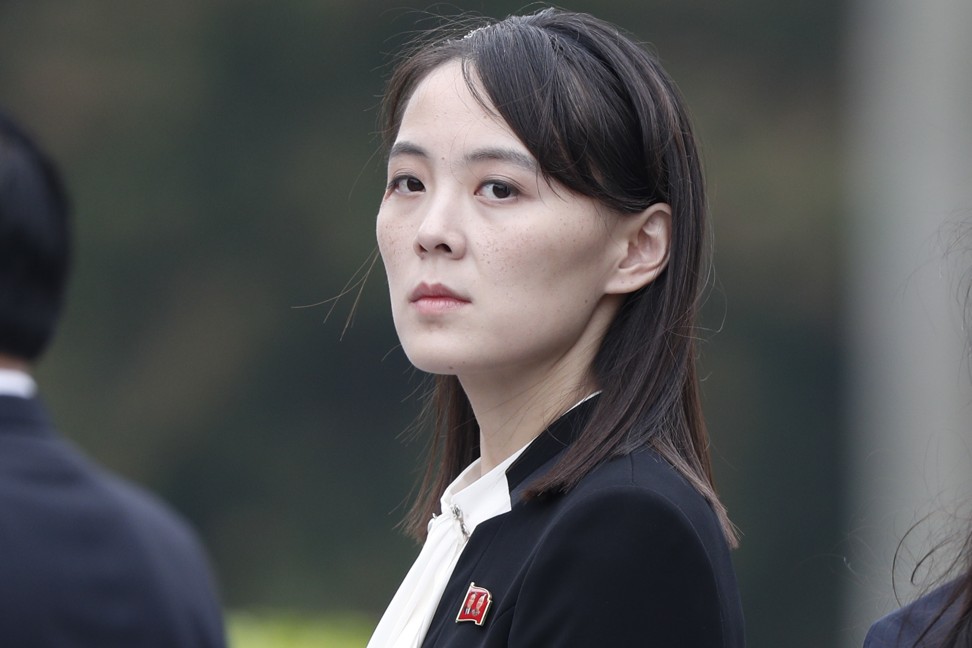
Kim Jong-un’s secret weapons: his wife, his sister and ‘Pyonghattan’ millennials
The North Korean leader has succeeded in making his two ‘first’ women the friendly faces of the regime

North Korea used to be a hermit kingdom, where everyone was equally poor. Everyone, that is, except for the ruling Kim family. But all that has changed since Kim Jong-un took over the dictatorship in 2011, at the preposterously young age of 27.
To defy the odds and stay in control, the Great Successor, as he was then known, has coddled the elite who keep him in power. And among this select group, there is one subset that Kim particularly wants to enrich: they are the millennials, the people of his generation, who, if they feel they are flourishing under his leadership, will keep him ruling for decades to come.
He has set out to recreate for them the privileged lifestyle he inhabited during his formative years at school in Switzerland and travelling around Europe. Today in North Korea there are things you would never expect to see – Western restaurants, sushi bars, German pubs selling craft beer and sausages, amusement parks with roller coasters and other gut-churning rides, and rollerblading rinks by the river. There are taxis where the meter starts at US$1 – a big chunk of the average US$10 monthly wage.
Over wood-fired pizza at the imaginatively named Italian Restaurant in the capital Pyongyang, a North Korean official told me that the Respected Leader wanted his people to be able to enjoy food from all over the world. Today, Kim Jong-un’s cabal can shoot pool and sing karaoke in “Pyonghattan”, the cosmopolitan capital within a capital. They can take yoga classes and drink cappuccinos. They wear fast fashion from H&M and Zara, brought in from China. They swing Dior or Gucci handbags. “Some are fake, but some are real,” says Lee So-hyun, who, along with her brother, has escaped from the regime and is now living a comfortable life outside Washington. She emanates privilege and poise even in America.

Lee is a few years younger than Kim and was once part of North Korea’s elite 0.1 per cent. She lived the good life in Pyonghattan, the daughter of an official involved in raising money for the Kim coffers. She was one of the millennials I met while I was trying to figure out how Kim had defied the odds to become, and more puzzlingly remain, the third-generation leader of the world’s most totalitarian regime.
I had become obsessed with North Korea after being posted to South Korea as a correspondent for The Financial Times in 2004, and my unanswered questions had only mounted with the ascension of Kim Jong-un.
In the course of trying to put together a portrait of the most Machiavellian leader of our time, I met people who’d known him as a child, including the Japanese sushi master who lived in the royal household when Kim was a young boy, and the aunt and uncle who posed as his parents while he was at school in Switzerland during his teenage years.
I also set out to meet the people who had endured his rule: the farmers and factory workers from the inhospitable northern reaches of the country, who were forced to turn to illegal border trading to make ends meet. People who’d been detained and beaten because family members had escaped to South Korea. The fat-cat oligarchs getting rich in an increasingly corrupt market economy. And their children, who lived a life they could imagine having in Seoul or Beijing.
When they were in Pyonghattan, Lee and her friends particularly loved to go to the gym. Not because they were exercise freaks but so they could flaunt their bodies. “We’re supposed to dress conservatively in North Korea, so people like going to the gym so they can show off their bodies, show some skin,” says Lee, describing how women like to wear leggings and tight tops.
It’s all part of the master plan. Kim has managed to keep a grip on this anachronistic regime for more than seven years by shrewdly generating both loyalty and fear.

He has taken full advantage of the political caste system created by his grandfather, founding president Kim Il-sung, which separates the populace into classes of the “loyal”, the “wavering” and the “hostile”. The lives of the hostile remain extremely difficult and those considered guilty of political crimes – such as questioning Kim’s right to lead – are still relegated to brutal hard-labour camps. Those who pose a threat to Kim’s leadership, including family members, have been killed.
And while he hasn’t embarked on major ambitious reforms, Kim has tolerated slightly more freedom in the economy and allowed people to feel like they have a little more scope to earn their own living.
The number of markets in the supposedly communist country has more than doubled in the third Kim era. North Koreans now buy and sell everything from home-made rice cakes and methamphetamines (Ice is popular as it suppresses the appetite) to imported solar panels and French perfume. More than 10 per cent of the population now have mobile phones. They’re not connected to the outside world, but still, they enable North Koreans to take videos and send selfies to each other.
When a boy tried to flirt with Kang Na-ra, the daughter of a nouveau-riche contractor in Chongjin, the third-largest city in North Korea, she would always look at his phone.

“If he had one of those old-style phones with buttons, I wasn’t interested,” Kang told me in Seoul (where she complained about living in an apartment much smaller than her family house in Chongjin). If a guy had one of North Korea’s Arirang smartphones, the kind that cost US$400, then she would give him a second look, she said.
These changes have given a significant proportion of the population the sense that their living standards are improving, for which Kim takes all the credit. But the improvement has been felt most keenly among the loyal, especially the younger generation of elites. For the millennials of Pyonghattan, life has never been better.
No one embodies this new young set like Ri Sol-ju, a pretty, talented singer who has been catapulted to the top of the regime. She is the wife of the Brilliant Comrade (another of many effusive monikers by which Kim is known). A glamorous young woman with a common touch, Ri has become an aspirational figure for millennials and an icon who has injected a feeling of modernity into the Kim monarchy. She is the North Korean Kate Middleton.
Her very public arrival was designed to show that North Korea had entered a vital new era, one in which young people could enjoy themselves and have ambitions – the young elite, at least.

Ri made her first public appearance as Kim’s companion in the middle of 2012. They were attending a concert in Pyongyang, seated in bright-red VIP armchairs. Kim was in his standard black Mao suit, while Ri, sporting a short haircut, wore a fitted black skirt suit with white stitching. Both wore red pins picturing the first two Kim leaders, which all North Koreans must wear over their heart.
A few weeks later, North Korean state media reported on the opening of the Rungra People’s Pleasure Ground in the capital, one of the new leisure complexes that Kim had ordered to show his “loving care” for citizens of all ages. Built on an island in the Taedong River, it included an amusement park, swimming pools and water slides, a dolphinarium and a mini golf course.
Kim attended the opening of this amusement park with a woman who was simply introduced as “Comrade Ri Sol-ju”. Everyone enthusiastically welcomed them, shouting, “Hurrah!”, according to the official account of the event published by North Korean state media.
Kim and Ri shook hands with the foreign diplomats who’d been brought in for the event. One, a Briton called Barnaby Jones, even went on a ride with Kim. It had not been disclosed that Kim had married, and Ri was not officially identified as his wife, but the relationship, with Ri looping her arm through Kim’s, was clear for all to see. The public acknowledgement of a leader’s wife was unprecedented in North Korea. Kim’s father, Kim Jong-il, never took any of his numerous consorts to public events.

But it wasn’t just the appearance of Ri – who is now 29, six years younger than her husband – that was a break from the past. It was her whole demeanour. She would continue to walk arm in arm with him, smiling, over the coming years, a stunning public display of affection in North Korea.
Ri appeared to be having a moderating influence on her husband. On the day that they went to the funfair opening, one of the rides stopped while Kim was on it. The stressed workers hurried to fix the problem, but the leader was furious, according to Thae Yong-ho, a former North Korean diplomat who defected from the country’s London embassy in 2016.
The workers, shaking in terror, apologised. The diplomats looked concerned. Then Ri approached Kim and quietly spoke to him, apparently calming him. It worked. Kim cooled down, and everyone breathed a sigh of relief, Thae wrote in his memoir.
Even before their marriage, Ri was not a typical North Korean. She was a captivating performer in a well-known artistic troupe – just like Kim’s own mother – and came from an elite family that has helped keep the Kims in power. As a child, she attended music schools in Pyongyang and then studied in China. After graduating, Ri became a singer with the Unhasu Orchestra, a Western-style ensemble that is a mainstay of North Korea’s musical culture. They perform snappy numbers such as Peace is Guaranteed by Our Arms. When she emerged as Kim’s wife, many North Koreans would have recognised her as the glamorous woman from the propaganda concerts.

She appears to have caught the eye of Kim Jong-il, who had a habit of marrying performers. He decided Ri should marry his heir apparent and secure a path to dynastic succession. “Father looked at me and told me to marry that woman, so I trusted him,” Kim told South Korea’s President Moon Jae-in during their first meeting in April last year.
As Kim Jong-il’s health deteriorated, Kim and Ri tied the knot. They are thought to have two or three children, and Kim is in turn no doubt grooming them for leadership.
But Ri is not the only young woman to have taken a prominent place in the regime under Kim Jong-un.
The other woman seen, not at his side but a step behind him, is his younger sister, Kim Yo-jong. As one of the few people the leader trusts, she has come to play a crucial role in her brother’s regime, acting as chief of staff, protocol officer and executive assistant rolled into one. She is his right-hand woman and gatekeeper.

In this way, the siblings are following the example set by their father. Kim Jong-il was close to his younger sister, Kim Kyong-hui. He adored her, one family member would later say. She played a crucial advisory role to her brother and held important positions within the Workers’ Party of Korea, right up to her disappearance at the time her husband, Jang Song-thaek, was executed by Kim Jong-un. Yes, as Kim was consolidating his leadership, he used the old guard, and then, once they’d fulfilled their purpose, had each of them disappear – or worse. He made an example of Jang Song-thaek by having him hauled out of a Party meeting and denounced in the state media as “worse than a dog”; and then swiftly executed.
But before that shocking event, Kim Kyong-hui had been quite high profile, and was seen regularly with her protégé, Kim Yo-jong. The two women had appeared at Kim’s equestrian centre at the end of 2012, both of them wearing brown jackets and riding white horses. Kim Kyong-hui appeared to be grooming her niece for the role of first sister, just as Kim Jong-il had groomed his son.
Kim Yo-jong was born in either 1988 or 1989, depending on whether you believe American or South Korean intelligence. She, too, led a cloistered life, growing up in the palaces of North Korea before being sent to Switzerland to join her brothers in Bern. She stayed there until 2000, having completed the equivalent of primary school. She is thought to have been privately tutored then to have studied at Kim Il-sung University, the Oxford of North Korea.
Kim Yo-jong made her first recognisable public appearance at Kim Jong-il’s funeral, a gaunt figure in a black dress, her face turned down as she walked behind her brother toward their father’s body. From the earliest days of her brother’s leadership, she has been there, supporting him. While the glamorous Ri is at Kim’s side to make him appear a more modern leader and convey a sense of aspiration to his people, Kim Yo-jong is working. The first lady may swan about in bright outfits and laugh with her husband, but the first sister is usually seen in no-nonsense black business suits, running around in the background.

In early 2015, Kim Yo-jong was put in charge of the Propaganda and Agitation Department. The department controls all media in North Korea, deciding what airs on television and radio, which stories appear in the newspapers, and which books are fit for publication. It is also the guardian of the personality cult of the leader. She was put in that position to ensure her brother, like their grandfather, comes across as a benevolent leader to be adored.
Kim Yo-jong was then made a member of the Central Committee of the Workers’ Party and, in 2017, she took her aunt’s position in the Workers’ Party politburo. A photo of the revamped group shows the first sister at the centre, flanked by dozens of men old enough to collect their pensions and one waiflike woman in her 20s.
Then she stepped into her biggest role yet. At the beginning of 2018, Kim sent his younger sister to the opening of the Winter Olympics, in South Korea. It was the first time since the Korean war (in the early 1950s) that a member of the ruling Kim family had gone to the South.
It was a masterful move by Kim. His younger sister has the same incentive as he does to ensure the regime remains in power but she doesn’t have his risible, cartoonish qualities.

From the moment she crossed into South Korea, she was an object of fascination among the South Korean public. She was demure and discreet. She wore a Mona Lisa smile and said nothing in public during the three-day trip. She wore plain black outfits and minimal jewellery and drew her hair back in a businesslike style. Young South Koreans, used to seeing their celebrities laden with bling and enhanced with plastic surgery, were surprised at how understated this “princess” was.
A former CIA analyst, Sue Mi Terry, told me at the time that Kim Yo-jong was “the Ivanka Trump of North Korea” because of her family connections and her ability to be a compelling saleswoman for her renegade male relative.
In private, however, Kim Yo-jong struck her hosts as refreshing and frank. “I never expected to come here on such short notice, to be honest, and I thought it would be strange and different but it’s not,” she reportedly said at a farewell dinner. “There are many things similar and the same. I hope we can quickly become one and meet these good people again in Pyongyang.”
Still, the North Koreans made sure to give only what they wanted to give during this trip. Kim Yo-jong stayed in the presidential suite of a five-star hotel, but she had brought her own camp bed. When she checked out, her room was spotless – not a fingerprint, not a single strand of hair left behind. South Korean intelligence would not be getting any Kim DNA.
For although these women might be the friendlier face of North Korea, both Kim Yo-jong and Ri Sol-ju are a central part of it. Both stand to lose their power and their privilege if the Kim regime collapses. And for that reason, both are doing their best to perpetuate it.
Text: Telegraph Media Group